
Key Points
U.S. equities remain in an uptrend from the March 2020 lows. Small caps continue to consolidate…a pause that refreshes? Is large growth reemerging as leadership? The Nasdaq Composite Index has “eyes for the highs.” S&P 1500 Retail Index Breaks to a record close on the week. The 10-year yield and commodities traded into important resistance. The dollar remains in a bearish momentum regime.
U.S. Equities
The S&P 500 added 2.71% on the week to close at yet another record high. The index open on Monday was the low price for the week while Friday’s close was the high, indicating that strength continued to build as the week progressed. In the near-term, there is support in the 3,950 – 4,000 zone then near the 3,700 level. On the upside, we continue to see potential for a move to 4,150.
From a momentum perspective, the 14-period RSI is entering overbought conditions but has not reached the extreme levels which were seen prior to the pandemic crash.
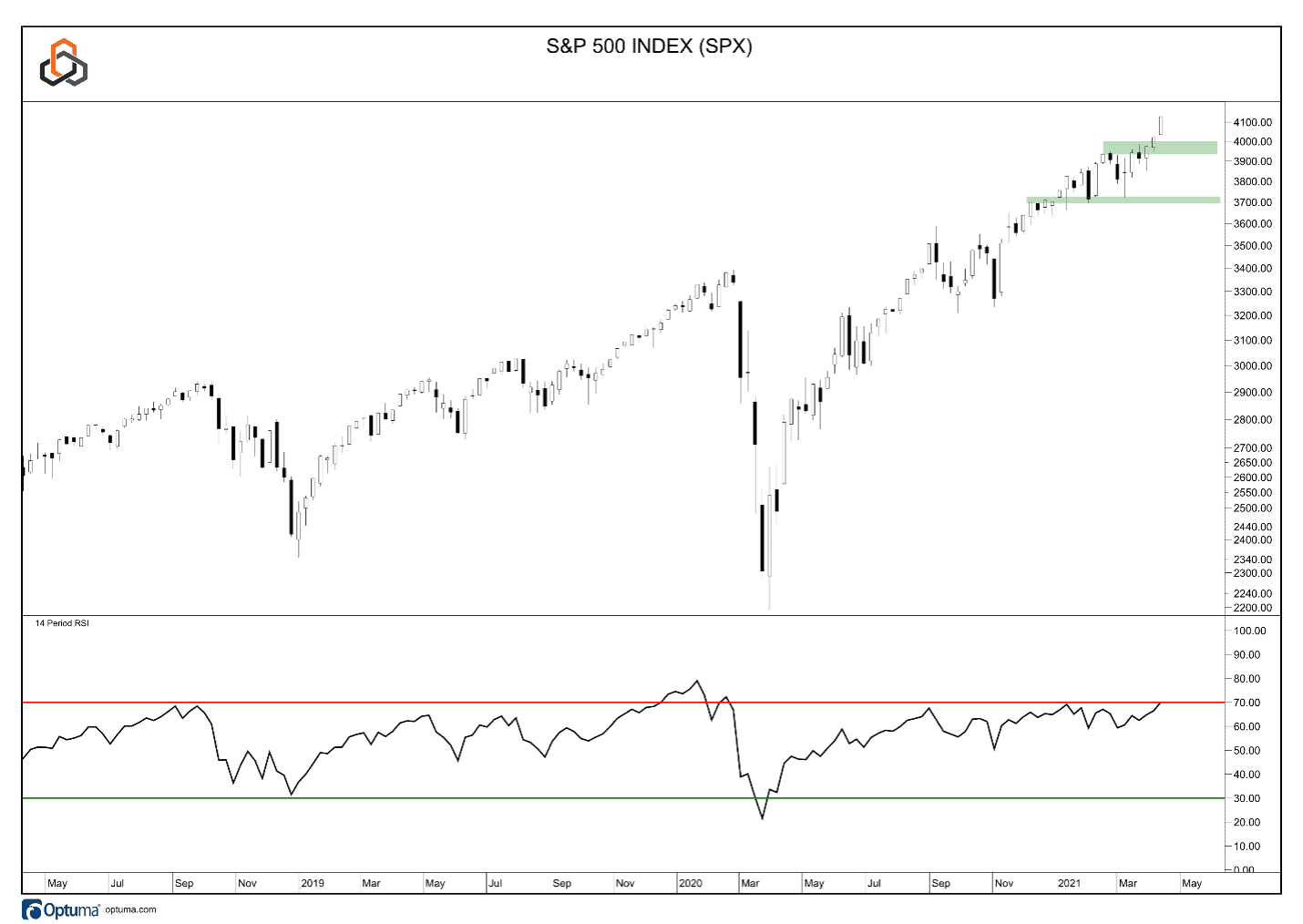
The S&P Small Cap 600 Index lagged on the week as it continues to work off overbought conditions. For now, the stalling action over the past few weeks appears to be playing out within an ongoing uptrend as important levels have not been broken to the downside. As mentioned last week, the change that could be playing out is on a relative basis with the small caps stalling at resistance vs the S&P 500 (bottom panel) after a strong run of outperformance.
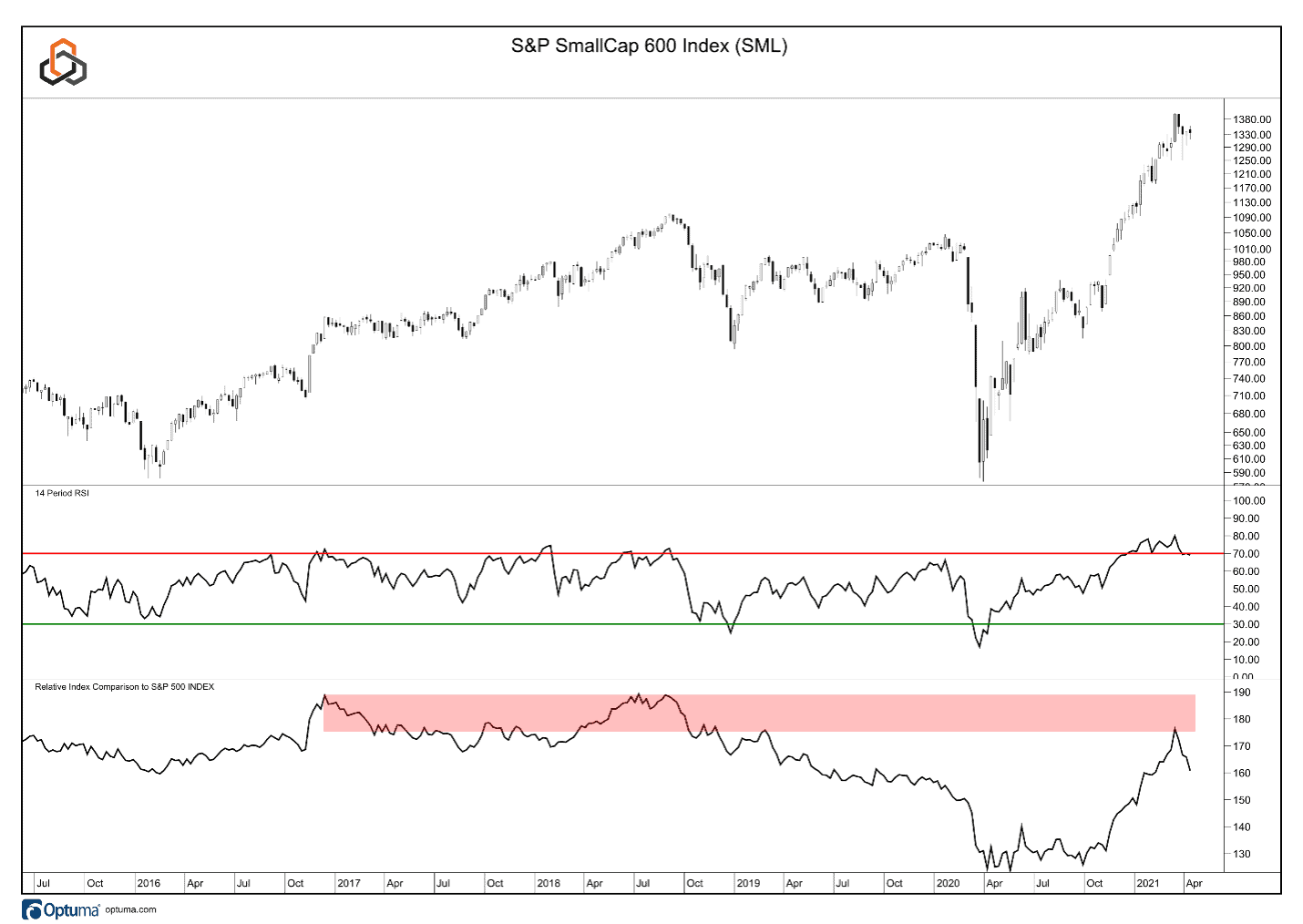
The individual sectors within the small cap landscape continue to confirm the ongoing consolidation within the index itself. The biggest possible shift is playing out within the small cap Energy sector, which is trading just above near-term support. Other leading sectors such as Technology, Industrials, and Discretionary are simply in consolidations.
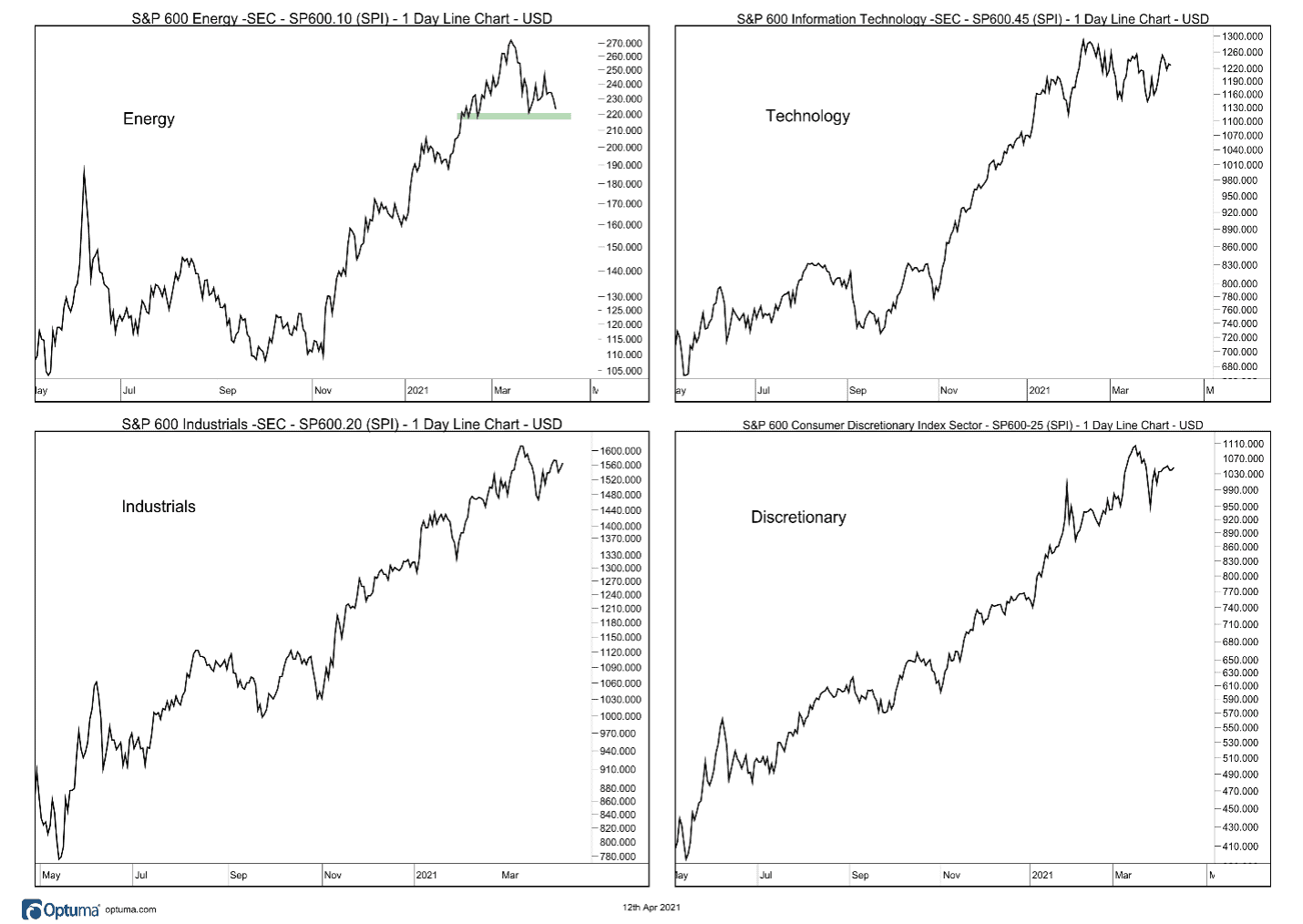
The Nasdaq Composite Index outperformed on the week, adding more than 3%, prompting some to begin to opine that the bout of underperformance on the part of large cap growth that has been in place since September may be ending. On an absolute and relative basis, the Nasdaq remains in a consolidation, for now. There is price-based support that begins near 12,400. Resistance is around the recent highs near 14,100. With momentum in a bullish regime, the odds favor a break of resistance and a continuation of the uptrend that has been in place since the March 2020 lows.
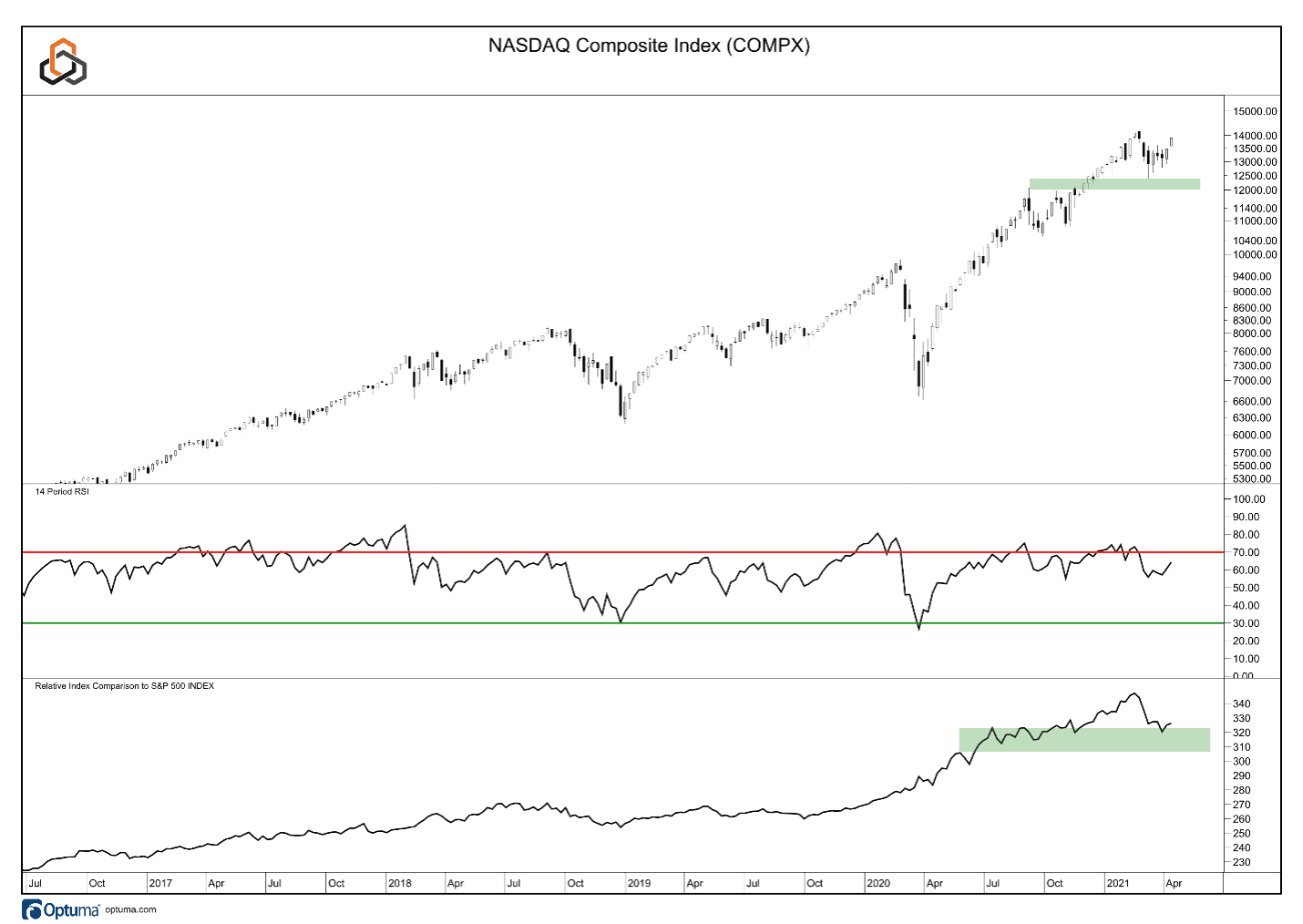
The S&P 1500 Retailing Index trading to a record high last week, moving up and out of a consolidation that has been in place since late-August 2020. The weekly RSI is breaking a downtrend line and has room to an overbought condition. On a relative basis (vs the S&P 1500), the Retailing Index has held support and is beginning to work higher, in a continuation of the uptrend that began last April.
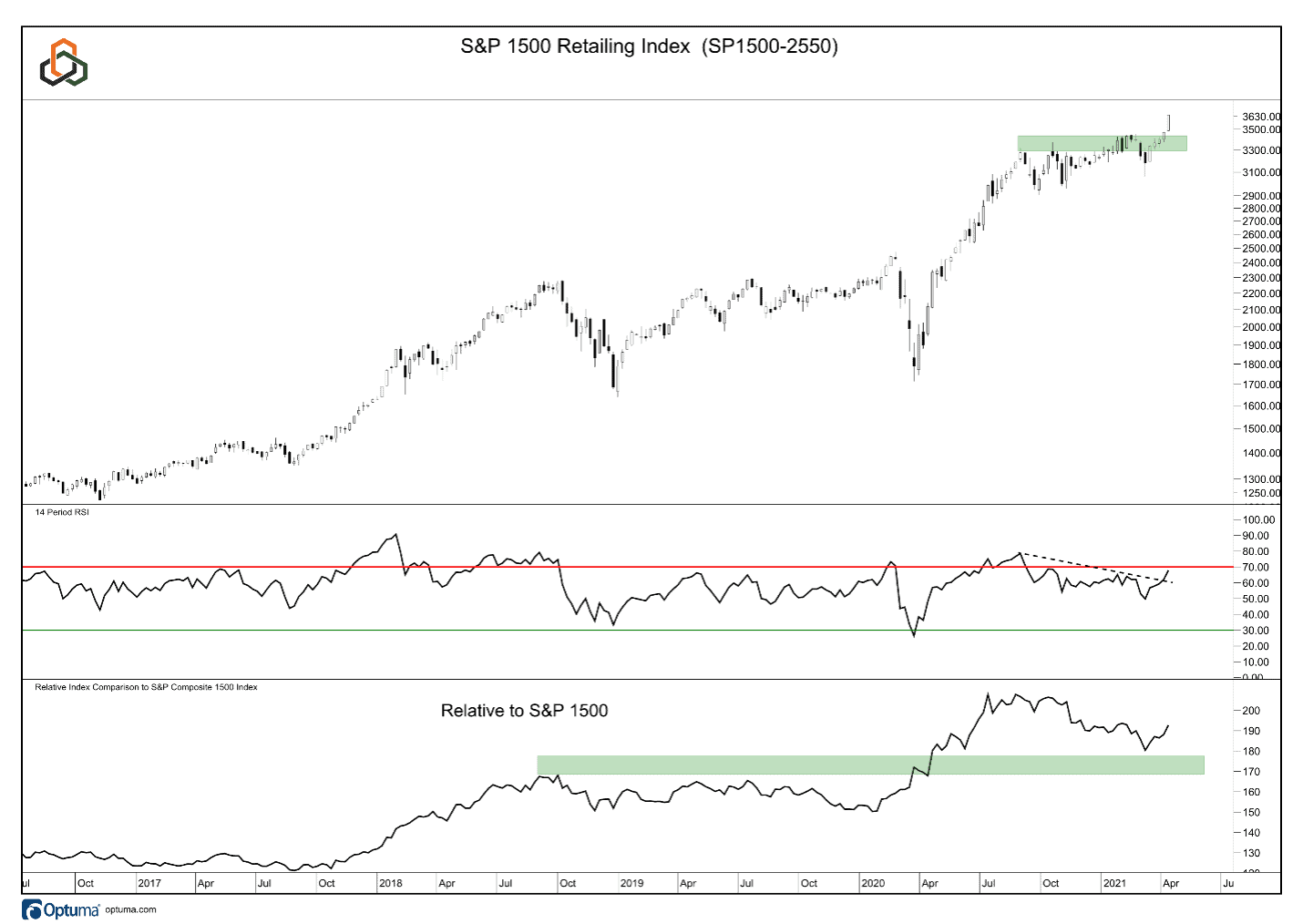
Within in the equity market in the U.S. the biggest developments over the past few weeks center on a potential shift back to leadership on the part of large cap and growth themes (see Friday’s note). On a higher level, the major averages in the U.S. remain in uptrends.
U.S. Fixed Income
The 10-year yield in the U.S. could be the clue that solves the puzzle of which theme in the equity market will take the leadership baton. As rates have moved higher on the prospects of an improving economic outlook, small caps and value have been clear equity leadership. However, in the near-term, the 10-year yield is trading into a resistance zone and the RSI recently became extremely overbought. Should rates fail to break through the 2% level or begin to fade from current levels, there is scope for the recent strength in the growth theme to continue, especially for the largest stocks with that theme.
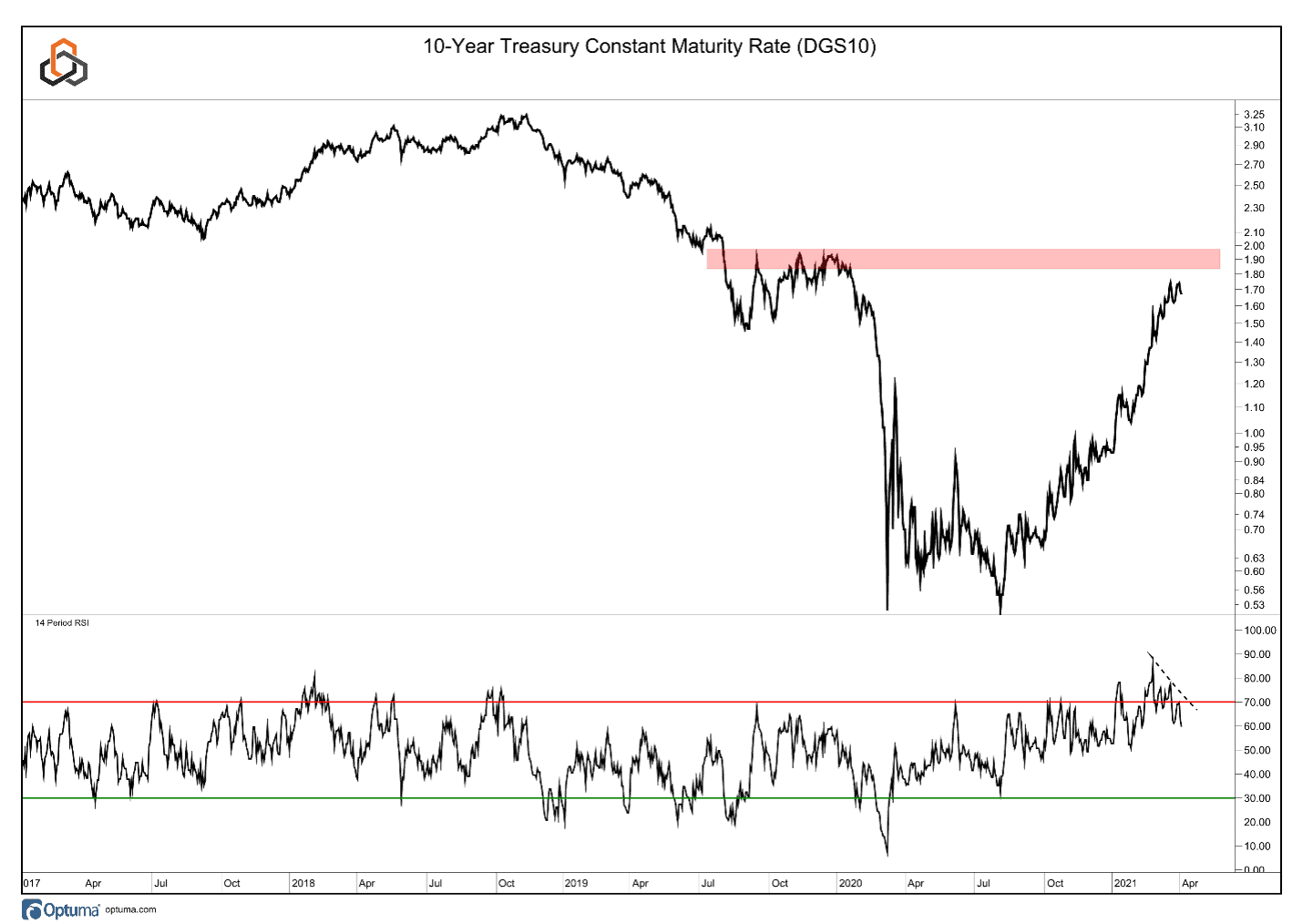
Global Equities
The Dow Jones Global World Stock Index (Excluding U.S.) added more than 1% on the week but was an underperformer relative to the equities in the U.S. Global stocks are in a weekly consolidation above the 2018 breakout level which is likely to act as support to near-term weakness should it appear. The current consolidation may simply be to work off the overbought RSI levels which were recently reached. On a relative basis, global stocks are continuing the base building process (bottom panel).
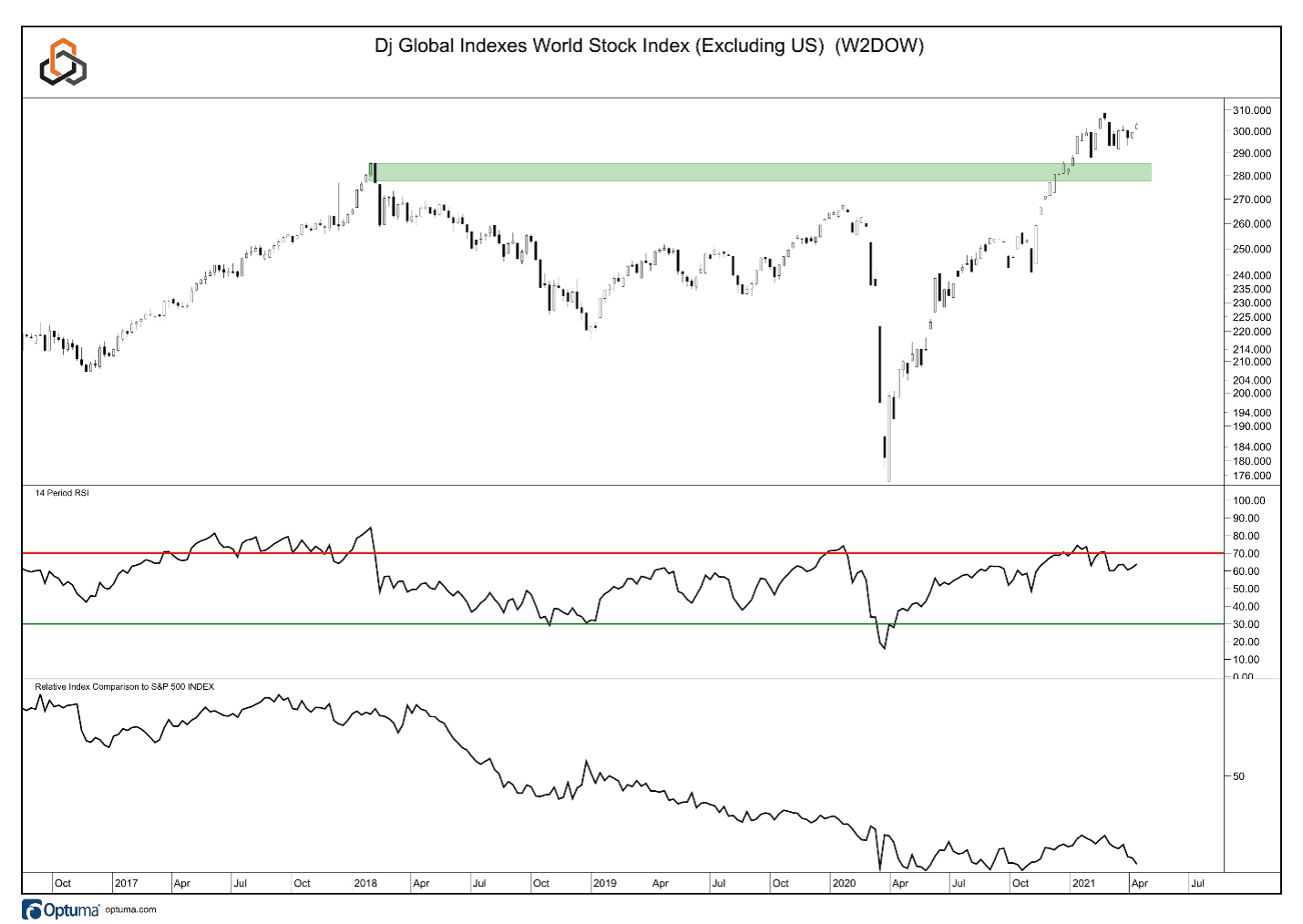
Commodities
The Bloomberg Commodity Index continues to consolidate below resistance (see last week’s note) as it alleviates an overbought reading on the weekly RSI. This level of upside resistance dates to 2016. Should it give way to the upside, the case would have to be made that a new long-term bullish cycle was underway. As an asset class, commodities (relative to the S&P 500, bottom panel) may be in the process of building a base after a decade of underperformance, but this shift will take time to play out.
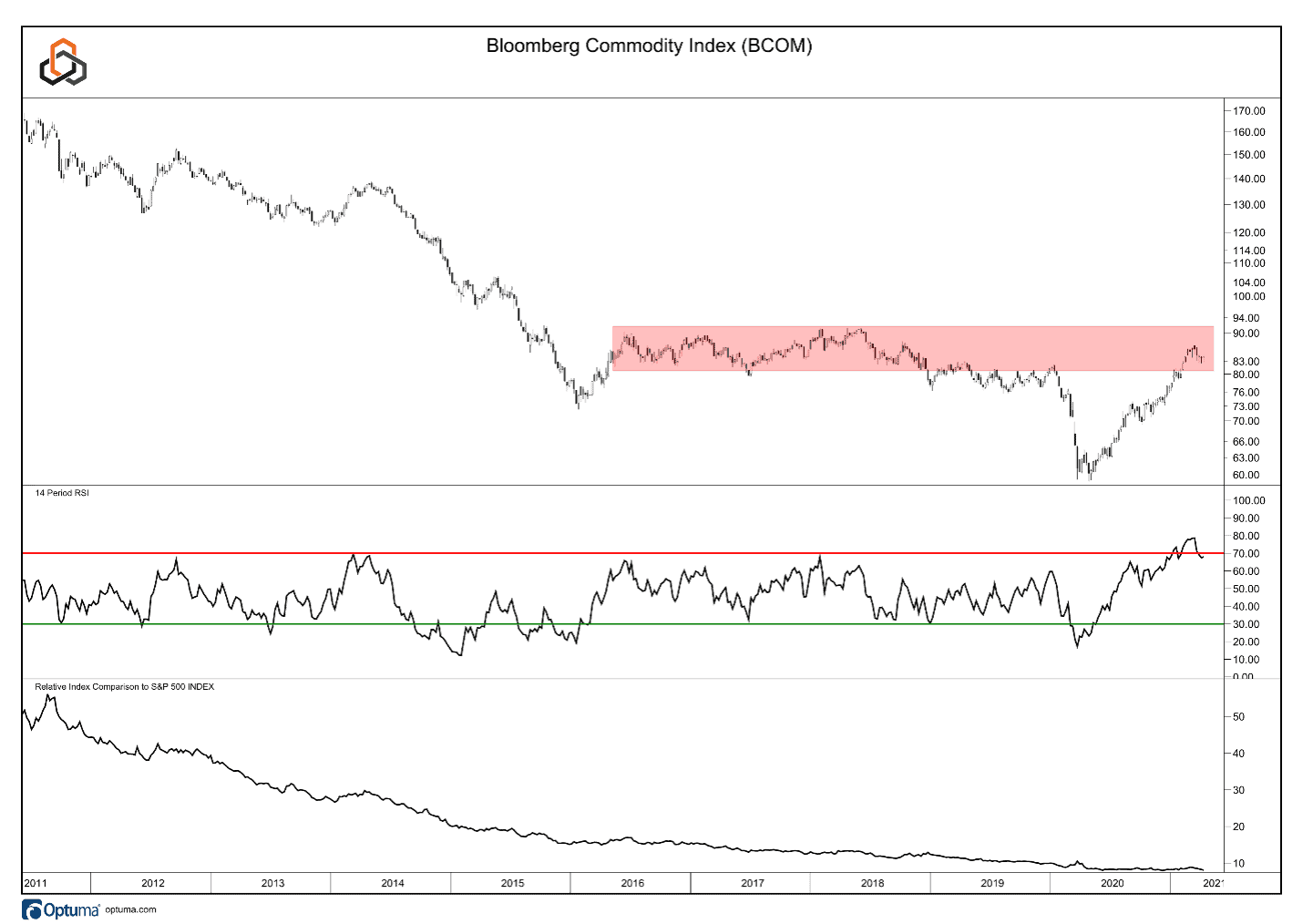
Within the commodity complex, Agriculture has been a leader but is nearing resistance at the 2014 highs. Base Metals have been strong and are holding above the highs from 2012. Precious Metals have come under near-term pressure as investors have been more focused on risk-taking rather than being conservative. Energy products have made a strong move from the March 2020 lows but are now trading into resistance. These views are unchanged from last week.
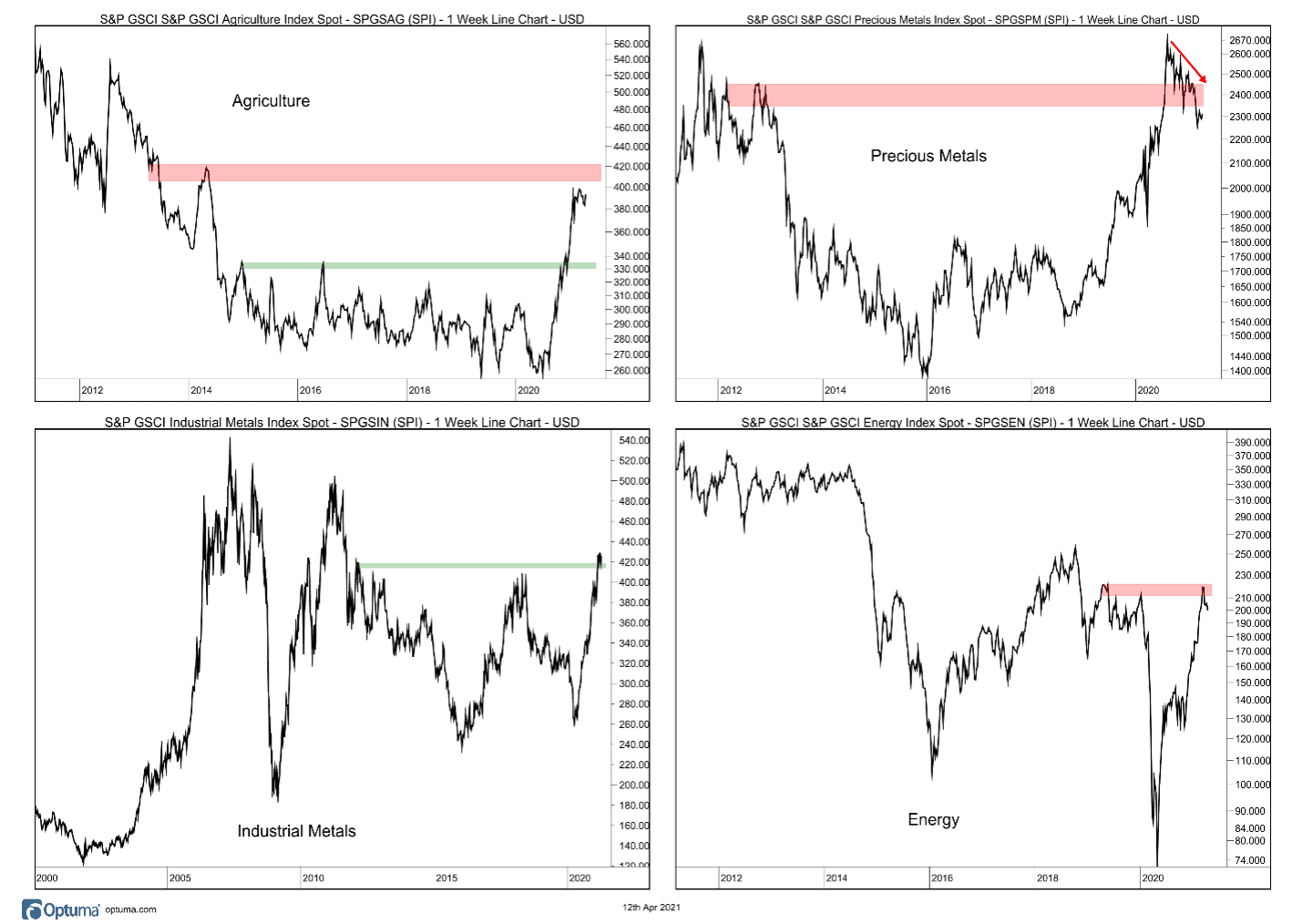
The U.S. Dollar
The U.S. dollar spent the majority of last week under pressure as the index has not been able to break above the 94 level to turn the trend back to the upside. Importantly, the rally that has been in place since the beginning of the new year has not been strong enough to push the weekly RSI reading above 60, indicating that momentum remains on the side of the dollar bears.
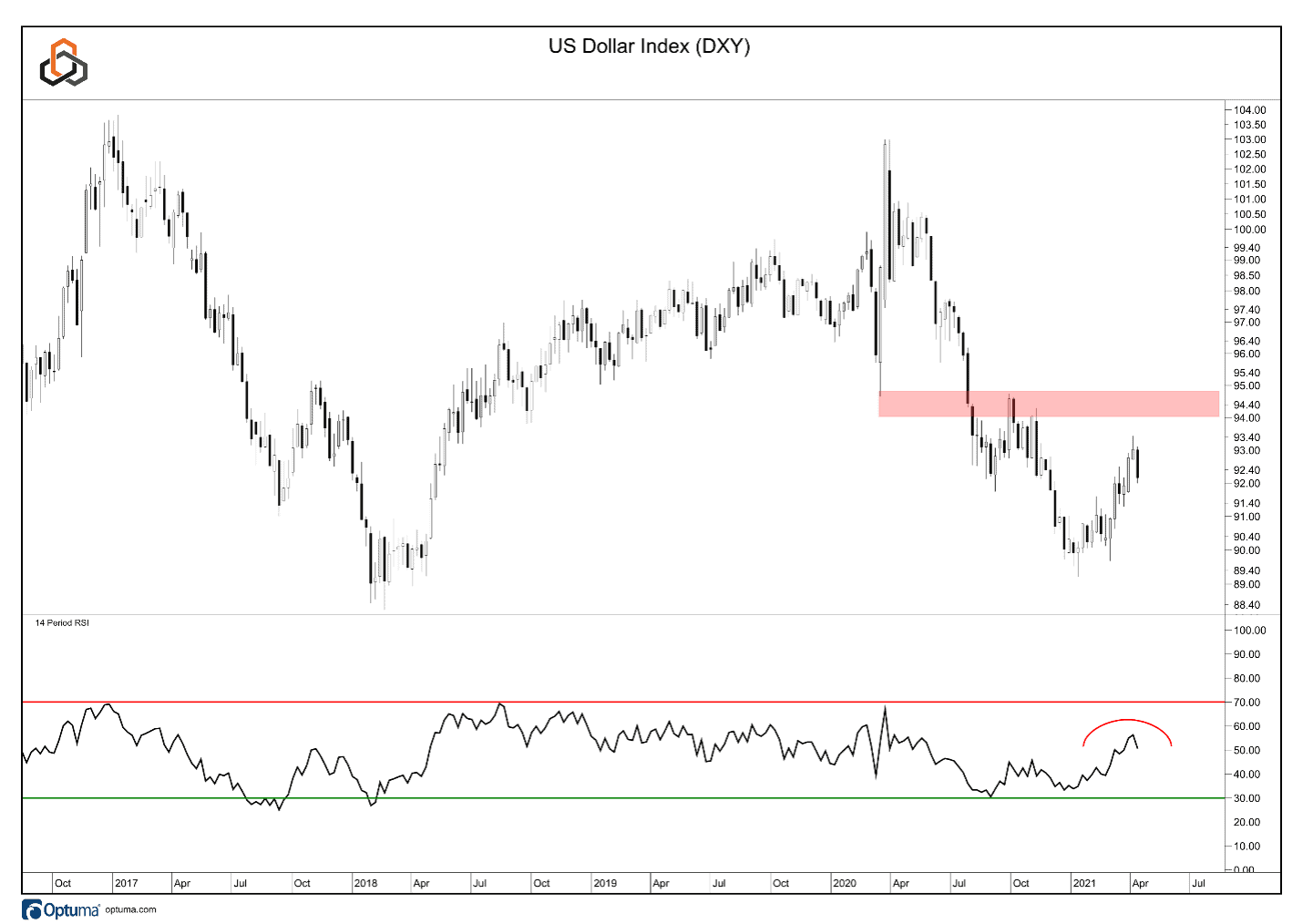
Take-Aways
Equities remain in an uptrend from the March 2020 lows. However, the game that is playing out under the surface is more compelling. There are subtle signs of a shift back to leadership on the part of large cap growth stocks, just as the 10-year yield trades into an important resistance point. At the same time, commodities (which are arguably an extension of the value theme) are fading from a five-year resistance level within the context of a decade-long downtrend.
